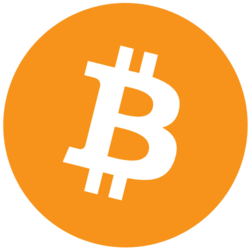Coin Launch Space is here to give you clear, accurate, and trustworthy information about crypto. Our team is made up of experts with real experience in crypto, finance, and new tech. Every article and page we publish is carefully reviewed by skilled editors to make sure it’s up to our high standards. We take pride in offering honest, easy-to-understand reviews based on real knowledge. Check out our editorial policy and see how we test and review crypto assets.
What if I told you that the hum of your smartphone could spin straw into gold? For years, that’s been the tantalizing whisper of Pi Network—a cryptocurrency mined not with clunky machines or electric greed, but with a simple tap on your screen. If you’re one of the millions in the US who’ve joined this quiet revolution, watching those Pi coins pile up like chapters in an unwritten book, you might be asking: how do I turn this digital dream into something I can hold—or at least deposit in my bank? Well, settle in, because we’re about to take a journey through the blockchain wilderness to find out.
It’s March 1, 2025, and the Pi Network has finally shed its cocoon. The open mainnet launched on February 20, 2025, sending Pi coins cascading into the marketplace like dominos in a decentralized dance. After over six years of buildup—born from the minds of Stanford grads Nicolas Kokkalis, Chengdiao Fan, and Vincent McPhillip—this project has crossed the threshold from promise to possibility. Exchanges have opened their doors, prices are flickering on screens, and for US pioneers, the question looms large: how do I sell my Pi coins right here, right now, in the land of the free and the home of the brave? Let’s peel back the layers and craft a roadmap tailored just for you.
The Pi Awakening: A Snapshot of 2025
Picture this: a ledger not bound by leather or locked in vaults, but alive, pulsing across a global web of nodes—blockchain, the unsung poet of our digital age. Pi Network has spent years weaving its verses, amassing over 100 million registered users worldwide, with 65 million still active, according to the latest murmurs from the Pi Core Team. Here in the US, millions have tapped their screens daily, drawn by Pi’s promise of accessibility—no hulking miners, no sky-high electric bills, just a phone and a flicker of optimism.
The turning point came on February 20, 2025, when Pi’s open mainnet went live. No longer confined to an enclosed ecosystem, those tokens you’ve hoarded are now tradable assets. Exchanges like OKX, Bitget, HTX, and MEXC have jumped in, listing Pi for spot trading. Stateside, the scene is buzzing too—Pionex US has emerged as a player, though options remain a bit patchwork due to America’s tangle of regulations. As of late February, CoinGecko clocks Pi at $2.66 per coin, with a wild ride from $0.71 to $2.99 in the past week. It’s a tempest, sure, but that’s the crypto game—equal parts thrill and trepidation.
For you, the American Pi miner, this is the moment of truth. Do you cash out now, riding the wave of early adopters, or hold tight, betting on a bigger swell? If selling’s on your mind, you’re in good company—this guide’s built to walk you through every step, with a lens on the quirks and quirks of doing it in the US. Let’s dive in.
Step 1: Getting Your Pi Ready to Roll
Before you can trade, you’ve got to prep your stash. Think of it like packing for a trip—you wouldn’t hit the road without your essentials, right? First up: make sure your Pi coins are migrated to the mainnet. If you’ve been mining since the app’s early days, you likely got a nudge to complete your Know Your Customer (KYC) verification. That was your ticket to freedom—unlocking your tokens for transfer. If you’re still lagging, fire up the Pi Browser app, head to the “Mainnet Checklist,” and finish that process. It’s straightforward—upload an ID, snap a selfie, and you’re set.
Next, peek into your wallet. Open the Pi Browser, punch in your 24-word passphrase—please tell me you kept that safe—and check your balance. If it says “migrated,” you’re golden. If not, you’re stuck in the old enclosed phase, unable to move or sell until you catch up. The Pi team’s made this smoother lately, but don’t sleep on it—time’s ticking.
A quick heads-up: the crypto jungle’s full of predators. Scammers love a fresh coin like Pi, dangling fake “wallet fixes” or “early payouts.” Never share your passphrase—not with Pi Network, not with anyone. If it smells off, it probably is. Keep your tokens close until they’re safely on a trusted platform.
Step 2: Picking Your US-Friendly Marketplace
Now, where do you take your Pi to market? Imagine you’re choosing a venue for a big show—each spot’s got its own vibe, rules, and crowd. In the US, crypto’s a bit of a tightrope thanks to state-by-state regs and federal oversight, so your options narrow compared to, say, Europe or Asia. Still, you’ve got three paths: centralized exchanges (CEXs), decentralized exchanges (DEXs), and peer-to-peer (P2P) trades. Let’s unpack them.
Centralized Exchanges: The Big Stages
CEXs are the heavy hitters—bright lights, big crowds, and a middleman to keep things humming. Since Pi’s mainnet debut, a few have welcomed it with open arms, though US availability’s a mixed bag due to compliance hurdles. Here’s the rundown, pulled from the latest at CoinCodex and CCN:
- Pionex US: A standout for Americans, Pionex rolled out Pi trading post-launch. It’s got a clean interface and decent liquidity, with a 24-hour volume hitting $3.2 million for PI/USDT in late February. Deposits are live, though some users report delays—patience is key.
- OKX: A global giant, OKX listed Pi on February 20 at 8:00 AM UTC, boasting a $5.63 billion volume. It’s accessible in many US states, but check your local laws—places like New York and Hawaii might be off-limits due to strict licensing.
- Bitget: Another contender, Bitget’s PI/USDT pair is live and kicking. It’s US-friendly in most spots, with quick verification and low fees (around 0.1%).
- HTX: Known for Pi IOUs pre-launch, HTX now trades real Pi. It’s spotty in the US—some states are blocked—so test it out.
These platforms handle the heavy lifting, matching buyers and sellers. You’ll need an account, some ID verification, and a Pi deposit. They’re fast and slick, but fees nibble—0.1% to 0.5% per trade—and prices can swing wild. Plus, Uncle Sam’s watching, so keep records.
Decentralized Exchanges: The Indie Route
DEXs are the free spirits—no overseers, just you and the blockchain. As of now, Pi’s not officially on big DEXs like Uniswap or PancakeSwap in the US, but that could shift if community pools pop up. You’d link a wallet like MetaMask, find Pi’s contract address (only from Pi’s official site—beware fakes), and swap for USDT or ETH. It’s lean on fees but light on liquidity, and you’re on your own if something glitches. For now, CEXs dominate, but keep an eye out—DEXs could bloom as Pi grows.
Peer-to-Peer: The Backyard Deal
P2P is the wild card—think of it as a garage sale for crypto. You trade directly with someone, online or even face-to-face. Platforms like Binance P2P (if Pi lands there) or LocalBitcoins-style sites can help, but you can also hit up Pi forums, Reddit, or Telegram groups. Some US merchants accept Pi too—gaming gear, silver, even a car, per Pi Core’s X posts during PiFest. Risks? Plenty. Trust’s the currency here—scams lurk, so use escrow or verified traders, and never send Pi without cash in hand.
Step 3: Moving Your Pi to a Platform
Let’s say Pionex US is your pick—stateside, solid, and ready. Here’s how to get your Pi there:
- Sign Up: Hit Pionex’s site, register with an email and password, and do the KYC dance—ID, selfie, the works.
- Grab Your Deposit Address: Go to “Assets,” click “Deposit,” search “Pi Coin,” and copy the address. It’ll be unique, starting with “M” or similar.
- Send from Pi Wallet: Open Pi Browser, unlock your wallet, tap “Pay/Request,” and pick “Manually Add Wallet Address.” Paste Pionex’s address, input your Pi amount, and hit send. Triple-check—blockchain’s a one-way street.
- Wait It Out: Deposits take 10-30 minutes, though launch-week traffic stretched some to hours. It’ll land eventually.
The drill’s similar for OKX or Bitget—just swap the name and follow their flow. If you’re in a restricted state, a VPN might tempt you, but tread carefully—exchanges frown on that, and it could snag your funds.
Step 4: Selling Your Pi Coins
Time to cash in. On Pionex, go to “Trade,” then “Spot,” and find PI/USDT. You’ve got two plays:
- Market Order: Sell at the going rate—$2.66 as I write, per CoinGecko. It’s instant, but you ride the wave.
- Limit Order: Name your price—say, $3—and wait. It’s a gamble, but a spike could pay off.
Pick your amount, confirm, and your Pi turns to USDT. Want BTC or ETH? Swap USDT on the same platform. Timing’s everything—Pi’s up 41.87% in a day, per CoinCodex, but it’s a rollercoaster. Hold steady through dips; early listings are chaos.
Step 5: Cashing Out or Converting
Your wallet’s now got USDT—stable and ready. What’s your endgame?
To Dollars in Your Bank
For fiat, P2P’s your friend. On Pionex, hit “P2P Trading,” choose a USD buyer (filter by bank transfer, PayPal, etc.), and sell your USDT. They’ll wire the cash—1-3 days, depending. Fees hover around 0.5%, so peek at the terms. In the US, banks like Chase or Wells Fargo work fine, but some flag crypto—call ahead if you’re unsure.
To Other Crypto
Staying in the game? Trade USDT for BTC, ETH, or whatever Pionex offers. Hit “Spot Trading,” pick your pair, and swap. Then, withdraw to a wallet—MetaMask, Trust, or a hardware one like Ledger—for safety. Pionex opened withdrawals February 21, so you’re clear to move.
Navigating the US Twist: Tips and Tricks
Three years in crypto’s taught me a few things—here’s what’ll keep you steady:
- Fees Sting: CEXs take a cut—shop around. Pionex is 0.2%ish; others vary.
- Security First: Enable 2FA, store big sums offline—cold wallets rule.
- Timing’s Key: Track Pi on CoinGecko—sell high, not low. Volatility’s your dance partner.
- State Rules: New Yorkers, Texans—your mileage varies. Check exchange access by ZIP.
- IRS Eyes: Crypto’s taxable—capital gains apply. Log every trade or face a headache come April.
The Road Ahead: Pi’s American Adventure
As we wrap up, let’s gaze at the horizon. Pi’s launch hit $2 fast, then dipped, per BeInCrypto. Skeptics mutter “pyramid scheme”; fans see a new dawn. With 100 billion tokens capped and adoption creeping up—65 million active pioneers—its fate’s unwritten. The Map of Pi app hints at merchant uptake, but will it stick? In the US, regulatory shadows loom—SEC murmurs could shift the game.
For you, it’s decision time. Sell now and bank the gains, or hold, dreaming of a moonshot? You’ve ridden this wave from a phone tap to a tradable coin—quite the tale. Are we building a digital utopia or chasing a mirage? The blockchain’s still scribbling its story, and you’re a co-author. What’s your next chapter? Keep exploring, keep questioning, and maybe keep a little Pi tucked away—just in case.
Disclaimer: The content provided reflects the authors personal opinions and is influenced by current market conditions. Conduct thorough research before making any cryptocurrency investments. The author and the publication are not liable for any financial losses you may incur.























